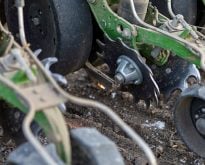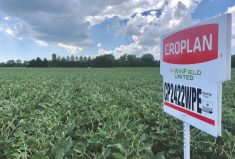Two years ago in the September edition of Country Guide, we ran a sidebar about a “complete systems” approach to production agriculture, including the depiction of a “production wheel.” The image comes from Don Lobb, an advocate for improving soil health and tile drainage. He created the guideline in a circular or wheel configuration, and it’s worth reprinting two years later, given the increasing scrutiny that’s following agriculture — from lake pollution to bees to GMOs.
Marked with “Adopt a Conservation Crop Production System” at its hub, the wheel contains 11 crop production components: fertility, weeds, disease, pests, cover crops, residue, soil ecology, tillage, rotation, drainage and varieties. The arrows point both inward and outward because they reflect a complex set of relations between various practices and the impact (or impacts) each can have on other parameters. Each time we change any one component of a crop production system, the change can impact or require different management for each other component — often with chain-reaction implications. For instance, a change in tillage practice can affect weed species, which in turn can affect herbicide options and this in turn can affect crop variety or hybrid choices. Bottom line: the best combination of components will result in the best crop production system.”
Read Also

Agronomists share tips for evaluating new crop products and tech: Pt. 3
With new products, new production practices and new technology converging on the agriculture industry at a frenetic pace in recent…
It took several years of on-farm tests and working with researchers for Lobb to amass the data that supports this view, and he first created his wheel depiction in 1982. Through the years it’s been adopted and amended by various individuals. Lobb’s initial intent was to provide a framework to analyze a crop production system, with enough clear definitions yet the flexibility to recognize the differences from one farm to another, and allow for widespread adoption by more farmers. Since he first published it, it’s been used by the University of Guelph, Agriculture and Agri-Food Canada (AAFC) and the Ontario Ministry of Agriculture, Food and Rural Affairs (OMAFRA), among others.
















